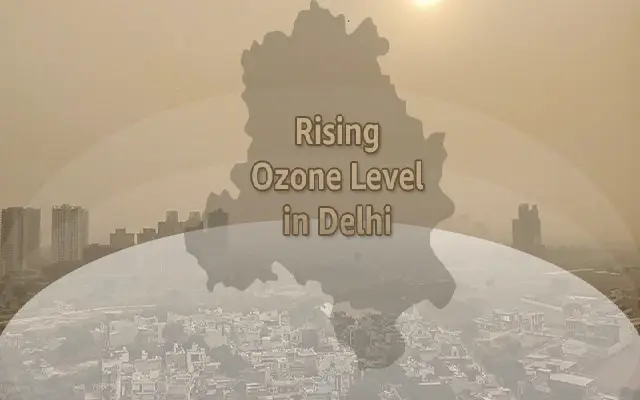Ground-level ozone has emerged as a significant pollutant in Delhi’s air, surpassing the eight-hour standard at multiple monitoring stations, according to an analysis of data from the Central Pollution Control Board (CPCB). The escalating ozone levels are anticipated to further increase in the upcoming days, posing health hazards to residents.
Ozone Formation and Sources
Ozone is produced through the intricate interplay of nitrogen oxides (NOx) and volatile organic compounds (VOCs), emitted from various sources such as vehicles, power plants, factories, and combustion processes. Under sunlight, these compounds undergo cyclic reactions, leading to the generation of ground-level ozone.
Health Implications
A 2023 analysis by the Centre for Science and Environment (CSE) highlighted the severe health consequences of ozone exposure. Individuals with respiratory conditions, asthma, chronic obstructive pulmonary disease (COPD), as well as children with underdeveloped lungs and older adults, are particularly vulnerable. Ground-level ozone can inflame and damage airways, increase susceptibility to infections, exacerbate respiratory ailments, and escalate the frequency of asthma attacks, resulting in heightened hospitalizations.
Monitoring Data
CPCB data indicates elevated ozone levels at various locations including Dr Karni Singh Shooting Range, Jawaharlal Nehru Stadium, Major Dhyan Chand National Stadium, Narela, Nehru Nagar, and RK Puram, surpassing the national ambient air quality standards of 100 micrograms per cubic meter for eight hours. Peak ozone levels are typically observed between 11 am and 6 pm.
Expert Insights
Sunil Dahiya, South Asia analyst at the Centre for Research on Energy and Clean Air, attributes the surge in ozone levels during summer to fossil fuel combustion, biomass burning, and high temperatures. He emphasizes the need to address sources of both PM2.5 and ozone to mitigate pollution levels.
Anumita Roychowdhury, executive director for research and advocacy at CSE, underscores the urgency of policy interventions to curb emissions contributing to ozone formation. While ozone is not directly emitted, measures to control precursor gases are crucial, particularly as the frequency of ozone exceedances rises during summer, posing significant health risks even with short-term exposure to elevated levels.
















